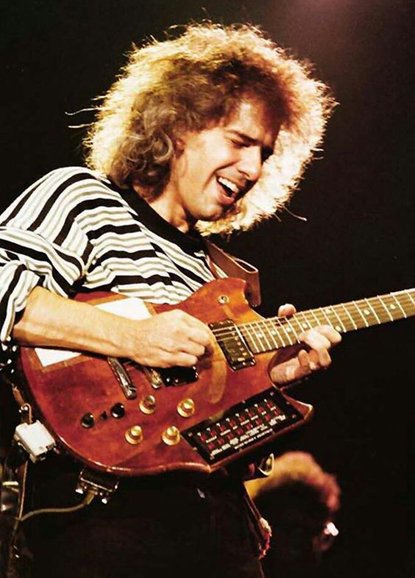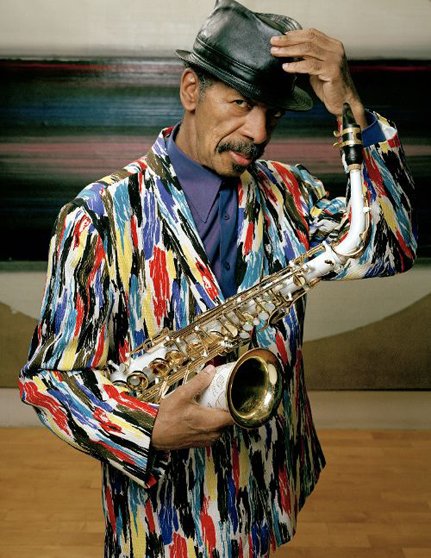Ornette Coleman (alto sax), Pat Metheny (guitar synthesizer), Charlie Haden (bass), Jack DeJohnette (drums) and Denardo Coleman (drums, percussion). From the album Song X (1986).
In 1959 started the last and most important of the revolutions that jazz has experienced in its history led by the alto saxophonist Ornette Coleman, who didn’t extend the limits of the established rules, but abandoned them completely. For Coleman, feeling and authenticity of expression was more important than harmony and technique. His music was strongly influenced by the blues, had a great rhythmic drive and concentrated only on the melody, free of harmony, modes, scales and metrics. In his groups without piano all the musicians were equal and had total freedom to play as they wanted interacting with each other to obtain a melodic dialogue.

His first albums, with which he produced fervent debates, were the precursors of his landmark work Free Jazz: A Collective Improvisation recorded by Atlantic Records in 1960. It consists of a single track of almost forty minutes played by a double quartet: Coleman himself, Don Cherry on cornet, Charlie Haden on double bass and Ed Blackwell on drums forming the first quartet, and Eric Dolphy on bass clarinet, Freddie Hubbard on trumpet, Scott La Faro on double bass and Billy Higgins on drums forming the second one.

DISCLAIMER
This composition is atonal and have neither established harmony nor rhythm, that is, each musician plays to his free will. It’s hard music to listen to, so I apologize in advance to those who may dislike it.
The theme consists of tho similar phrases repeated three times by Coleman and Metheny in unison, and a long passage with an arrangement made from dark and bewildering sounds also interpreted in unison. Haden then introduces walking and Coleman makes an ingenious and creative solo pushed by DeJohnette. At a some point Metheny joins in adding more disorder in the composition and after a while he leaves. Later he does the same thing again while Coleman continues his speech. Then, Metheny reappears for the third time throwing wood into the fire and making Coleman harden his playing until the group calms down and re-exposes the theme.
